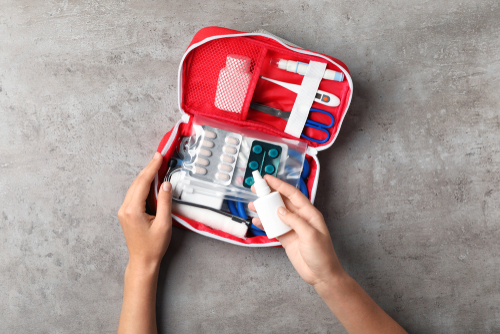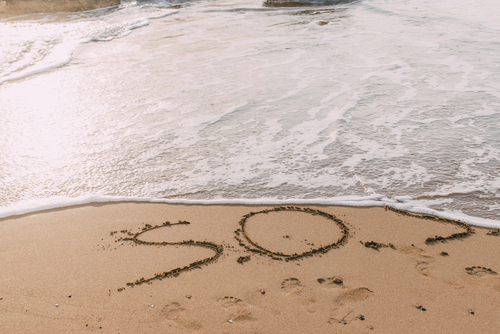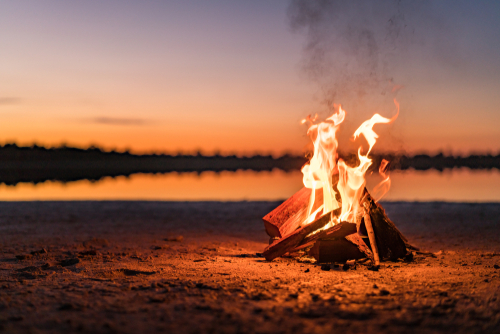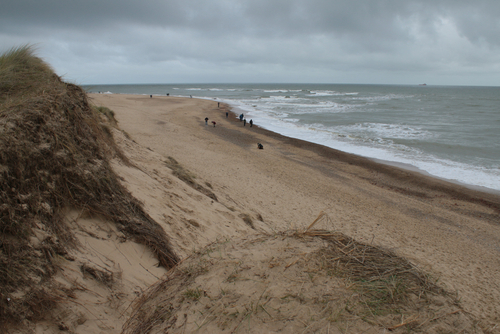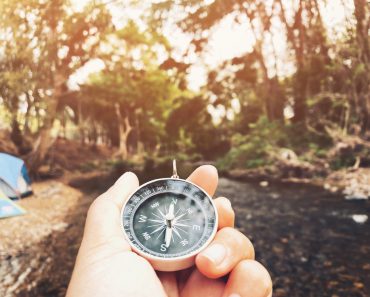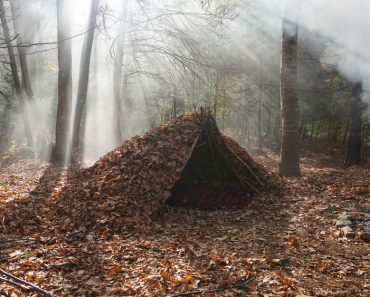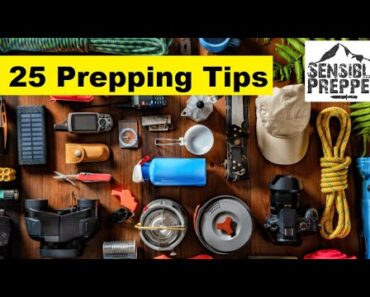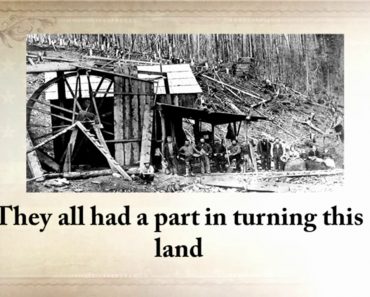It was estimated that the vast majority of Americans live within a few hours’ drive of a coastline.
In case a natural disaster or an SHTF event hits that force the majority of the population to evacuate, we can assume that all those within a reasonable traveling distance of a sea or ocean will make the journey. If you are among those that are looking for the safety of the shoreline, the following tips will help you stay alive.
For the keen survivalist, the shore offers a great number of outstanding resources. How he or she goes about the business of wilderness survival near the coastline is often influenced by the type of coastline they find themselves on.
Let’s say you find yourself on rocky shores in a temperate zone. In such a case you will be able to gather mollusks, mussels, various echinoderms, and an assortment of seaweed, all of each are edible. Even more, tide pools that you will discover in the rocky outcroppings will contain certain fish of good size and quality besides the other wild edibles mentioned.
If by any chance, you find yourself near a sandy shore, you may have access to similar food sources, but this time, it will be harder to get them. This may be outweighed by the ease whit which our survivalist can procure palatable water, compared to the rocky coastline. Instead of trying to find streams or creeks, the beach survivor could dig a shallow beach well and have plenty of water.
In a survival scenario, these are called trade-offs and every environment has distinctive differences that can come to the aid of our survivalist, or on the contrary, it can make survival more challenging. In our case, the first coastline is more suitable for food procuring, while the sandy coastline is more suitable for procuring fresh water. However, they both have a thing in common that can help the survivor, the hinterland (land before the shore).
The hinterland often contains great shelter spots and material to build various shelter designs, all sorts of tinder kindling and fuel to start and maintain a campfire, and various other materials that can be used to improvise rescue signals on the beach.
The terrain of this region plays an important role too. Regardless if the survivor is on the leeward or windward side of a peninsula, island, or near-shore mountain range, these are terrain particularities that play important roles.
As specified before, there are a lot of variables in a survival scenario, but we do know that any survivor will have to deal with five skills necessary to his or her well-being. These skills are first aid, signal, fire building, shelter and food, and water. These are the survival pillars you will have to deal with when living near the coastline.
First aid
The fringes of the oceans and seas will provide some special concerns to our survivors. These are unique places that harbor creatures such as Fire Sponge, Common Razor Lion’s Mane, Portuguese Man-of-war, and Long-spined Urchin.
All these creatures will make life awful for the unwary survivalist. Although the injuries caused by the unexpected encounters with these creatures may be minor at first, they will become excruciatingly painful and even life-threatening after a short period of time. If you are not able to treat those wounds swiftly and correctly, you will soon enough become a threat to your own existence.
A close friend was diving for lobsters in Southern California, and he failed to treat two small blisters that appeared on one of his feet. After the last dive, he started to notice some pain in his toes, but being an army man, he ignored it and decided to push through.
He believed that the pain would eventually subside, but by dawn, he realized he made a major mistake. He started losing sensation in his leg and was rushed to the hospital. He was put under various medications and the medical staff tried to figure out what happened to him and why his inflamed foot was causing so much pain.
They kept him pumped with Oxacillin, and after a week, he managed to get out of the hospital. The moral of the story is that you should treat all wounds quickly and seek medical help when your gut is telling you there’s something wrong going on. In an unknown environment, it pays to assume nothing but the worst.
One of the most common injuries you will have to deal with near the coastline is abrasions. The abrasions caused by coral will get infected in no time and cause intense pain. The shoreline survivor should be cautious when exploring the environment, and proper footwear is highly recommended. Having an improvised staff to help you keep your balance on rocky terrain and interact with various sea creatures when scavenging in the shallows is also recommended.
Punctures are also things you should worry about, especially if you consider that stingrays rest on the bottoms in the shallows, hidden in the sand. They can react unexpectedly when disturbed, and the barb on their tail can cause a serious injury and intense pain. I was once stung by one, and the protein-based toxin they deliver with each sting can cause a lot of damage. As a first-aid measure, I firstly soaked the area with hot water to alleviate the pain and reduce the swelling before going to the hospital.
Rescue Signals
You’ve seen in survival movies how sandy coasts are preferred for creating the famous SOS sign. However, you can create a visually impacted rescue sign on a rocky shore just as easily. If you keep in mind that all shores have seaweed of some sort near or on them, you will put it to good use. If you let them dry and use them as burning fuel, seaweeds will create a great deal of smoke that can be seen from a few miles.
For a more permanent rescue signal, use the same weed to spell out an SOS on the beach, but make sure the sign won’t be washed off by the waves.
If rescue parties come by helicopter, you can set three seaweed signal fires in a row. Set them 25 yards apart, if you have enough space since this will allow the helicopter’s pilot to establish wind direction in the landing zone. Even more, you can use a signal mirror and flash every passing aircraft.
Avoid audio signals since the wind can neutralize their effect much faster than it will extinguish your signaling fires.
Fire building
Before planning your campfire, you first have to pick a fire site. The best location for your fire site is near the area where the hinterland meets the shoreline itself. Such an area can provide easy access to fire building materials and also quick access to the signaling fires.
This region will also protect the fire for being exposed to intense wind and other elements that may shorten the life of your campfire. Tinder can come in many shapes and forms along the coast. Sandy beaches often have fine grasses growing behind the dunes. Seaweed that was hidden by the sea at high tide may become visible and accessible at low tide. When dried out in the sun, a thin stripe of seaweed can make good tinder.
In subtropical regions, natives often used the inner husks of coconuts as both kindling and fire fuel. They tore them into shreds and let them dry if necessary to have a good supply of tinder. In a temperate zone, you may have the shoreline lined with conifers, and you can use the most lower branches and shave some resinous shaving for tinder. Driftwood can be found regardless of the region, and it can be chopped and used as kindling.
Everything pulled from below the surface by storms can be used both as kindling and fire fuel. Shorelines are often packed with things brought by storms, from downed trees to junk made by our fellow humans.
Shelter
Along the shoreline, the wind is the main element that poses a problem to the integrity of your improvised shelter. Such a problem can only be minimized if you pick a proper site selection if you know how to plan a shelter and how to build a sound construction with the materials you have at hand.
Two of the most common shelters built by coastline survivors are the lean-to and beach trench. You’ve probably seen plenty of lean-tos in various survival scenarios regardless of the environment in which such scenarios took place. They are versatile, and you can easily modify them to fit your situation. If you plan to build such a shelter, you have to make sure you can reinforce the weak points by any means necessary since its above-ground design makes it easy for the elements to bring it down.
On the other hand, a beach trench is quite useful on sandy shores. You can dig a trench deep enough for protection, but not deep enough to strike groundwater. Shore up the side and collect materials to build a roof. Since the roof will be exposed to the elements, you will have to reinforce it just as you would to with the lean-to design. Another suggestion would be to line the floor of the trench with vegetation from the hinterland for added comfort. Also, keep in mind to build this type of shelter above the high tide line. You can easily recognize it by the debris line.
Food and water
The coastline can offer an impressive variety of food, both plant, and animal. However, you need to have an extensive understanding of how the ecosystem in such a region functions and how to find and prepare the food. You have to study for many years and do quite an impressive number of trips and experience in the field.
On sandy shores, the sand will harbor clams, crabs, and all sorts of other creatures that can be eaten or put to good use, such as bait. Knowing what to look for and how to use it once you found it will make your survival easier.
Rocky areas may contain tasty foods such as blue mussels, limpets, and a bevy of other mollusks. Some of my friends living on the Southern Maine Coast are experts at collecting snails of all sorts in the tide pools. They will collect different species of seaweed, such as duke, laver, and Irish moss.
Water procurement along the coast can be just as easy as finding food. Try digging down three or four feet into the sand, behind the first dune or pressure ridge on a beach. Remember, that dune might be a mere barely discernible rise in the sand. Shore up the sides as the water seeps into the hole, and wait a couple of hours. The top two inches or so of that water will be potable.
If sand is less than abundant on your beach, search the shore for outlets of creeks and streams. Check the hinterland for the same, as well as springs, puddles, ponds, and so on. Your map may give you a hint as to where to look. How about the base of a cliff or rock overhang? Maybe some water has been collected there. Been raining lately? Set out some containers to gather up the next rainfall.
Concluding
The coastline can offer various options for the survivalist, and if I would personally have the chance to select such a survival location, I would go with a sub-tropical, wind-ward seacoast. The possibilities of coastline survival are endless if you use common sense and your “survival brain.”


